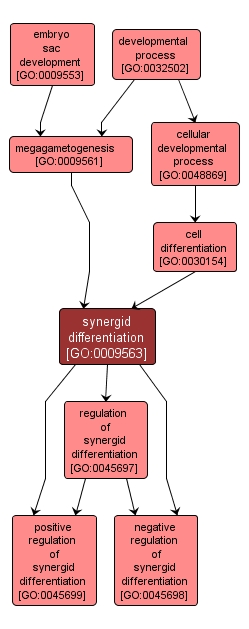GO TERM SUMMARY
|
| Name: |
synergid differentiation |
| Acc: |
GO:0009563 |
| Aspect: |
Biological Process |
| Desc: |
The process whereby an uncellularized nucleus cellularizes and acquires the specialized features of a synergid cell. |
Synonyms:
- synergid cell differentiation
|
|

|
INTERACTIVE GO GRAPH
|














